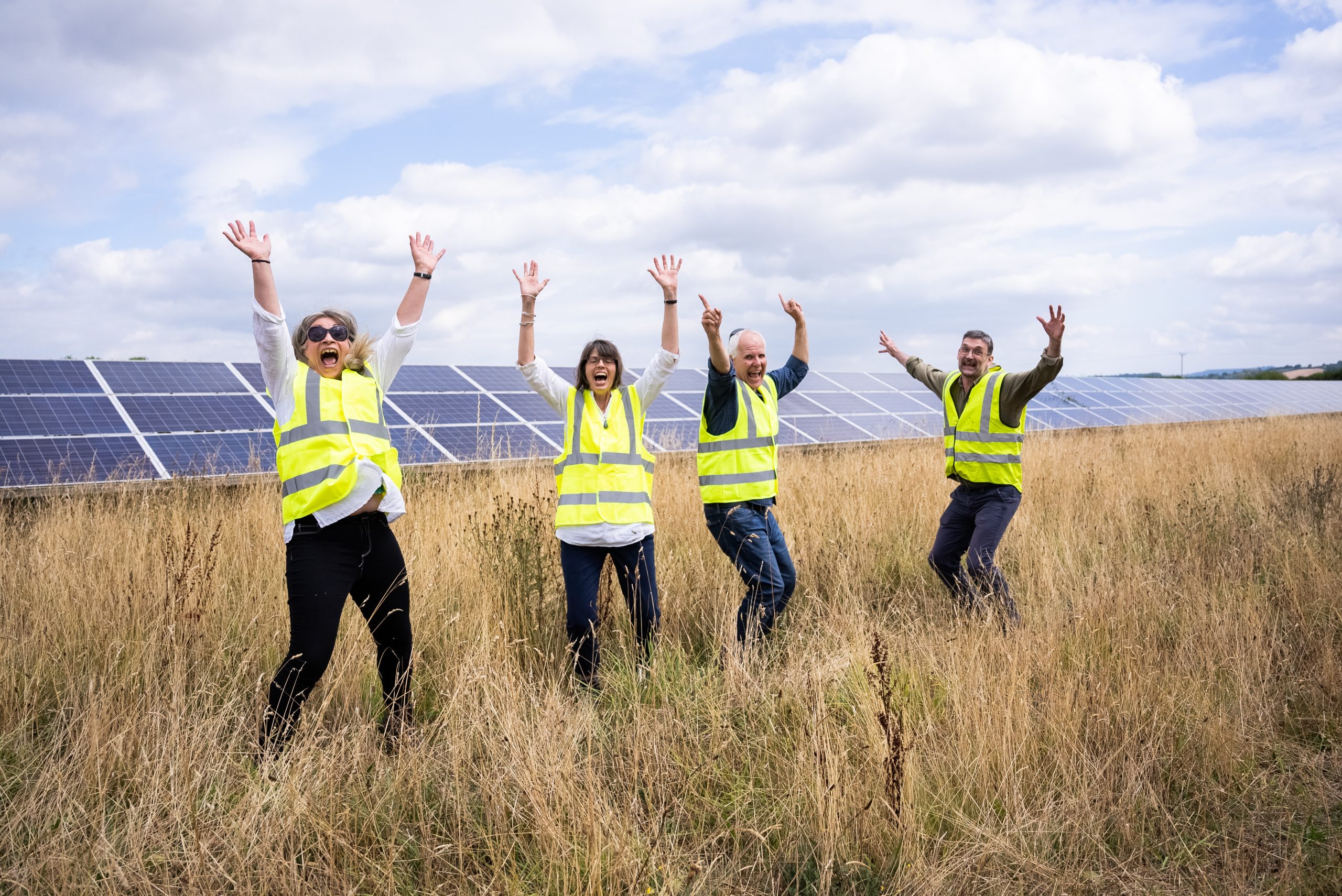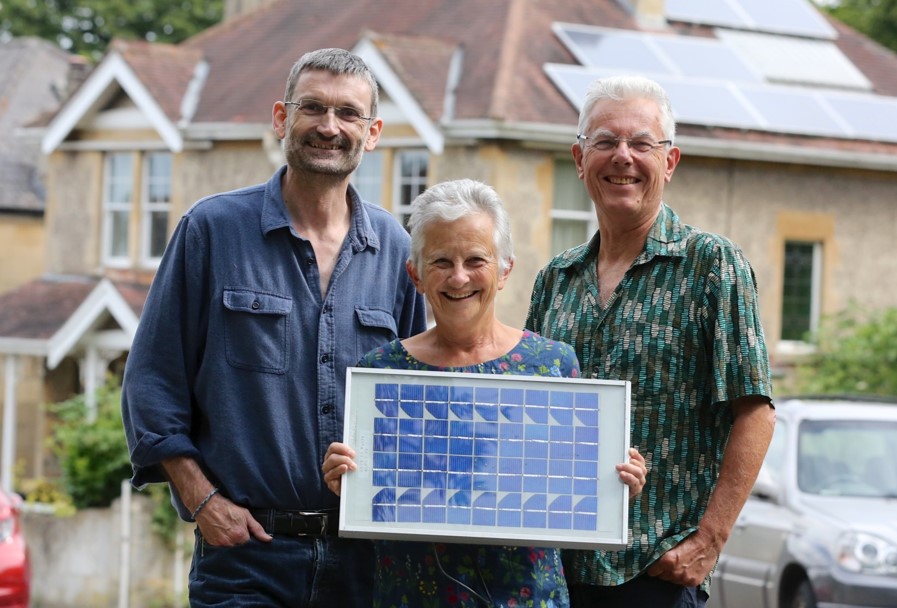In our March 2025 newsletter we asked if you had any questions about central government policy relating to community energy. Here are the questions we received with answers from BWCE Managing Director Pete Capener.
If every Local Authority in the UK just had at least one community energy group the size of the larger groups like BWCE or Low Carbon Hub in Oxfordshire, or Plymouth Energy Community, we would have over 5GW of community renewables capacity, creating over 10,000 jobs and engaging millions of people in the process.
Is this government’s approach to community energy different from the last government?
Yes, significantly. The current government, and in particular Ed Miliband as Secretary of State for Energy Security and Net Zero, does seem to recognise and value the role of community energy within the energy transition.
The government has committed to delivering the Local Power Plan (LPP) through GB Energy, the new publicly owned energy company. The LPP will provide support and funding to community energy businesses like BWCE and local authorities to deliver local and community renewable energy projects. Until recently the level of funding intended for the LPP was £3.3 billion over the life of the parliament, however the current economic climate has called this into question, and we wait to see what will happen at the spending review in June.
Ed Miliband said in parliament in October last year that … “the Government are committed to delivering the biggest expansion of support for community-owned energy in history.”
However, to be fair the government wouldn’t have to do much to improve on the last administration that reluctantly offered £10 million over 2 years as part of a Community Energy Fund in 2023, following heavy pressure from cross party MPs and from the lobby group Power for People.
But nevertheless, the LPP, with a goal of delivering 8GW of local and community renewables, representing a 20 fold increase in capacity, could be transformative for the community energy sector and provide a massive boost to building support for the energy transition at a local level.
On top of which this government has cancelled the effective ban on onshore wind turbines and improved the planning environment for renewable energy generally, as well as committing to resolving the massive problems associated with securing grid connection.
However, we wait to see how strongly government will support improving the energy efficiency of the UK’s housing stock and the role community energy businesses can play in delivering this goal. Beyond the extension of existing support programmes for social housing and low income households, there has been little forthcoming.
There has been virtually no recognition of the role community energy can play in encouraging and supporting take up of energy efficiency measures within the home. Though this is no change from previous administrations.
There also seems to be a pretty near total avoidance of the link between the current economic model, with its focus on GDP and narrowly defined economic growth, increasing resource use and the climate crisis. It seems it’s easier for the Pope to discuss this openly, but not our politicians.
So far, what are the key changes GB Energy have made that have impacted BWCE (positive and negative)?
The bill that will formally set up GB Energy has not yet received Royal Assent. However, recruitment has started, with good people being employed to oversee the delivery of the Local Power Plan which is encouraging.
The first allocation of funding continued the last administration’s level of funding for the Community Energy Fund with £5 million for 2025-26 but also provided £180 million in 100% capital grant funding for schools and hospitals to install renewable energy.
The grant funding will provide a welcome reduction in fuel bills for the recipients. But it has impacted our ability to offer community solar to the same building owners. This impact and the missed opportunity for partnership with the community energy sector to enable funding to go further and have more impact, has been clearly fed back to government.
Are you speaking to the government or GB Energy or both?
Yes, through my involvement with Community Energy England (currently Interim Chair) and as co-chair of a ministerial advisory group on community energy, we have regular contact with both government civil servants, ministers and with GB Energy.
Another major change has been the commitment and enthusiasm for change amongst civil servants working in the Department of Energy Security and Net Zero who now seem to believe that they can make a difference with a secretary of state who also seems to believe in what he is doing.
We are also getting wider ministerial engagement with several ministers within the department engaging with the sector and attending contact group meetings which is also a welcome change.
What have been BWCE’s key recommendations for the Local Power Plan?
BWCE has been making the following points with reference to the LPP.
- The Local Power Plan should be designed to bake in partnership between local authorities and the community energy sector, rather than create two separate programmes, encouraging joint ventures and joint investment, as well as purchasing of locally generated renewable energy. For example, BWCE has a particularly strong partnership with Bath & North East Somerset Council that has done much to support BWCE’s growth over the years.
- Grant funding should be allocated to support capacity building and early stage feasibility studies.
- Contingent development loans should be used to support project development, with funds written off if projects don’t reach financial close, for example not securing planning or grid connection.
- Capital loans should be available to support community energy organisations to establish shared ownership projects with commercial developers, to ensure a larger proportion of the renewable energy pipeline is brought into community ownership.
- Capital loans could then be re-financed, giving community groups one to two years to raise their own community finance and debt and enabling the funds to be lent out again to support other projects.
- Capital grants should be used only where projects would not be viable without them, for example, solar for small village halls or primary schools that would not be viable for community solar due to smaller roofs and/or lower onsite electricity demand.
- Where offered, capital grants should be at a % necessary to make the projects stack up, enabling community energy to work in partnership and enable public funding to have the greatest impact, levering in community finance rather than replacing it.
- Practical support and guidance should be offered to local authorities and community energy groups, particularly where organisations are at an early stage and are developing their first projects
Other recommendations include:
- Securing affordable long term capital finance with tax relief for investment and project finance via the National Wealth Fund, on similar preferential terms as provided to Local Authorities
- Enabling consumers to purchase electricity directly from local community renewables, supplying local power for local people
- Allocating some grid capacity directly for community renewables
- Increasing support for home energy efficiency and in particular recognising and supporting the role of community energy in raising awareness and facilitating retrofit works
The community energy sector faces a massive opportunity but also a significant challenge as it transitions from being primarily volunteer led, to being led by paid staff with volunteer support and engagement. This transition will be central to scaling the sector and maximising impact.
This is a sector development task and will require vocational training, establishing vocational pathways, apprenticeship programmes, CPD, sector skills plans, business advice etc.
If every Local Authority in the UK just had at least one community energy group the size of the larger groups like BWCE or Low Carbon Hub in Oxfordshire, or Plymouth Energy Community, we would have over 5GW of community renewables capacity, creating over 10,000 jobs and engaging millions of people in the process.
Watch Pete Capener speaking at the Parliamentary Energy Security and Net Zero Committee session on Unlocking Community Energy at Scale on 2nd April, together with other representatives from community energy organisations..


